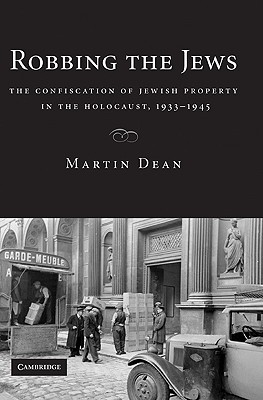Robbing the Jews: The Confiscation of Jewish Property in the Holocaust, 1933-1945

Robbing the Jews: The Confiscation of Jewish Property in the Holocaust, 1933-1945
Robbing the Jews reveals the mechanisms by which the Nazis and their allies confiscated Jewish property, demonstrating the close relationship between robbery and the Holocaust. The spoliation evolved in intensifying steps. The Anschluss and Kristallnacht in 1938 reveal a dynamic tension between pressure from below and state-directed measures. In Western Europe the economic persecution of the Jews took the form of legal decrees and administrative measures. In Eastern Europe authoritarian governments adopted the Nazi program that excluded Jews from the economy and seized their property, based on indigenous antisemitism and plans for ethnically homogenous nation states. In the occupied East, property was collected at the killing sites - the most valuable objects were sent to Berlin, items of lesser value supported the local administration and rewarded collaborators. At several key junctures robbery acted as a catalyst for genocide, accelerating the progression from pogrom to mass murder.
PRP: 351.25 Lei
Acesta este Pretul Recomandat de Producator. Pretul de vanzare al produsului este afisat mai jos.
298.56Lei
298.56Lei
351.25 LeiIndisponibil
Descrierea produsului
Robbing the Jews reveals the mechanisms by which the Nazis and their allies confiscated Jewish property, demonstrating the close relationship between robbery and the Holocaust. The spoliation evolved in intensifying steps. The Anschluss and Kristallnacht in 1938 reveal a dynamic tension between pressure from below and state-directed measures. In Western Europe the economic persecution of the Jews took the form of legal decrees and administrative measures. In Eastern Europe authoritarian governments adopted the Nazi program that excluded Jews from the economy and seized their property, based on indigenous antisemitism and plans for ethnically homogenous nation states. In the occupied East, property was collected at the killing sites - the most valuable objects were sent to Berlin, items of lesser value supported the local administration and rewarded collaborators. At several key junctures robbery acted as a catalyst for genocide, accelerating the progression from pogrom to mass murder.
Detaliile produsului











